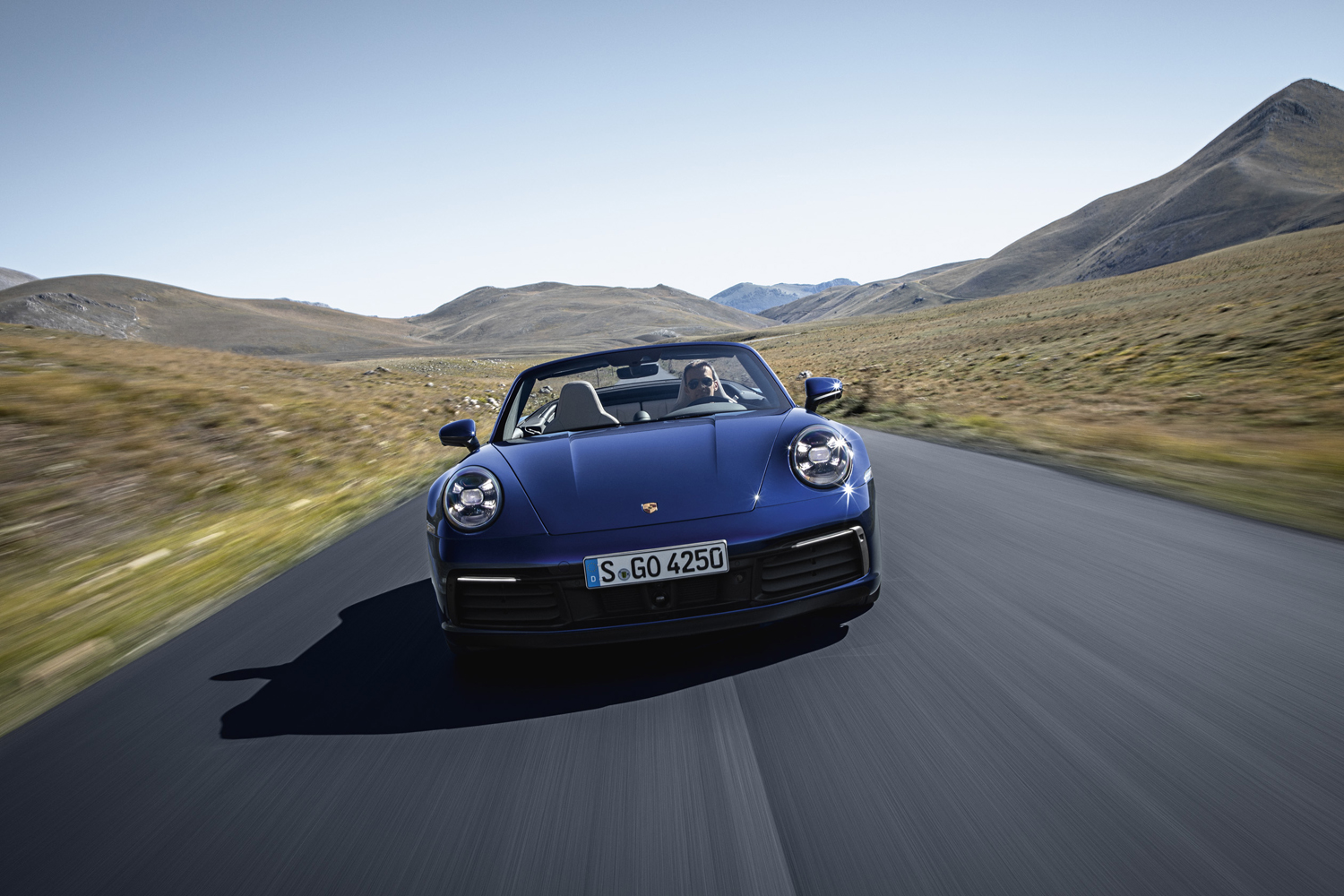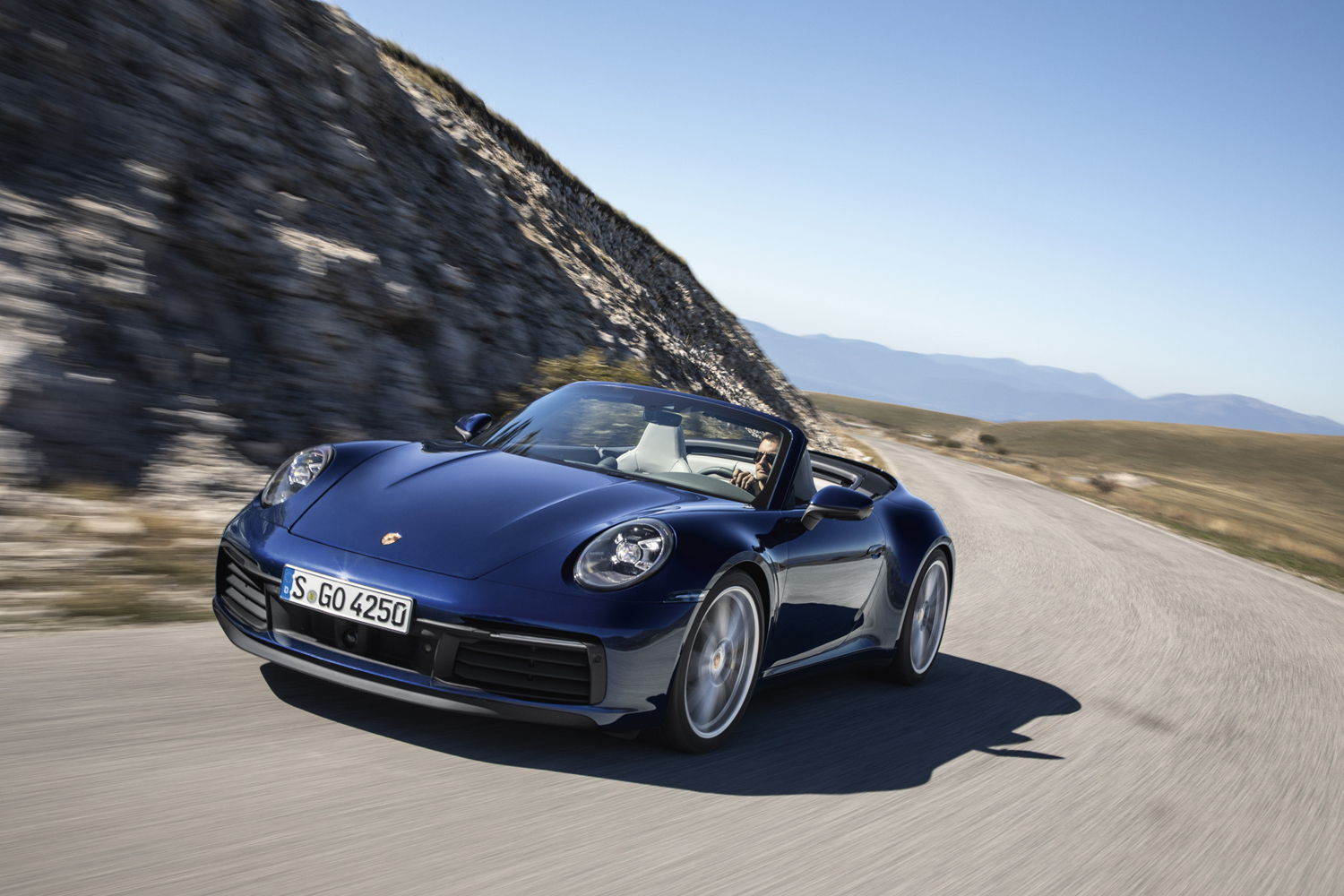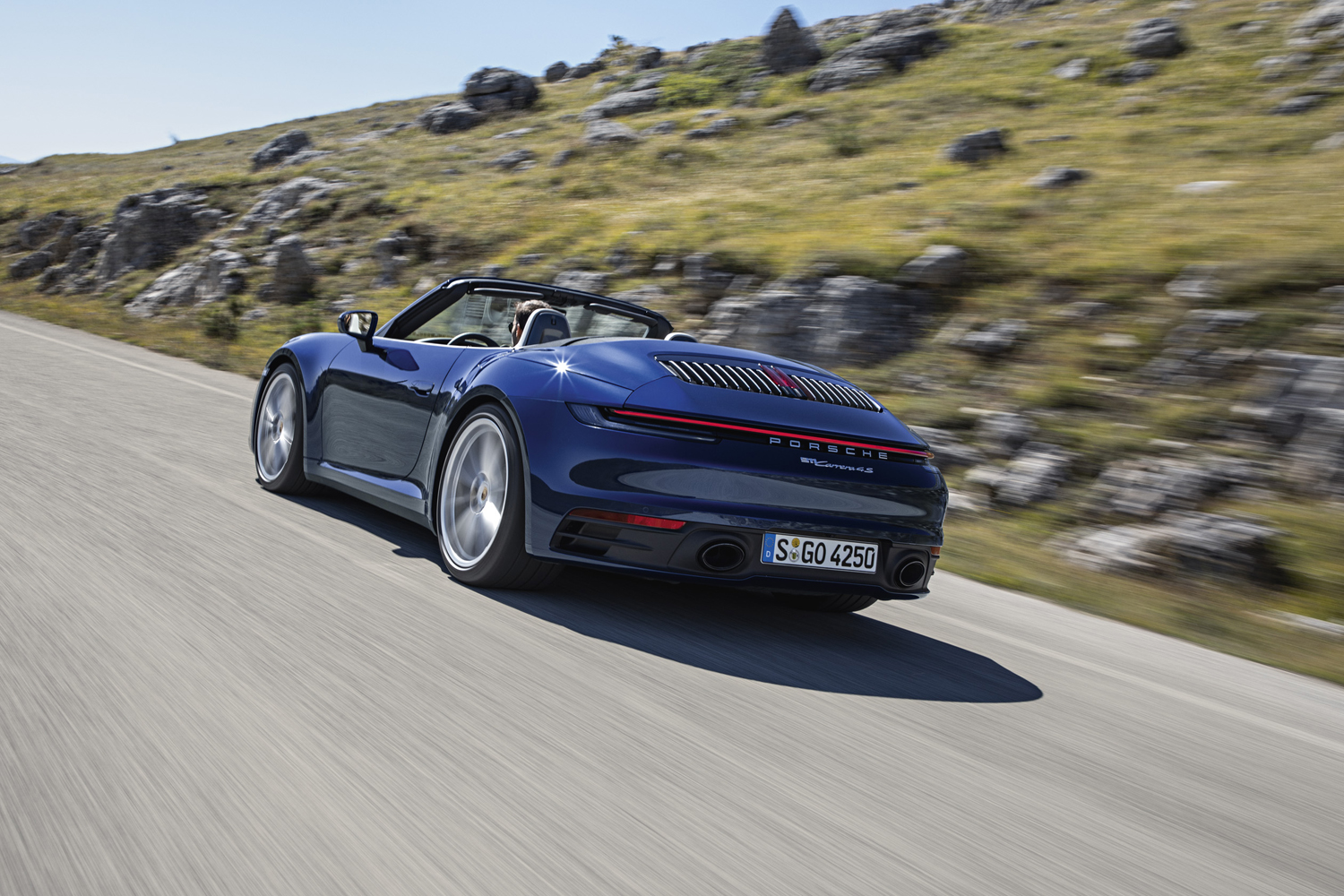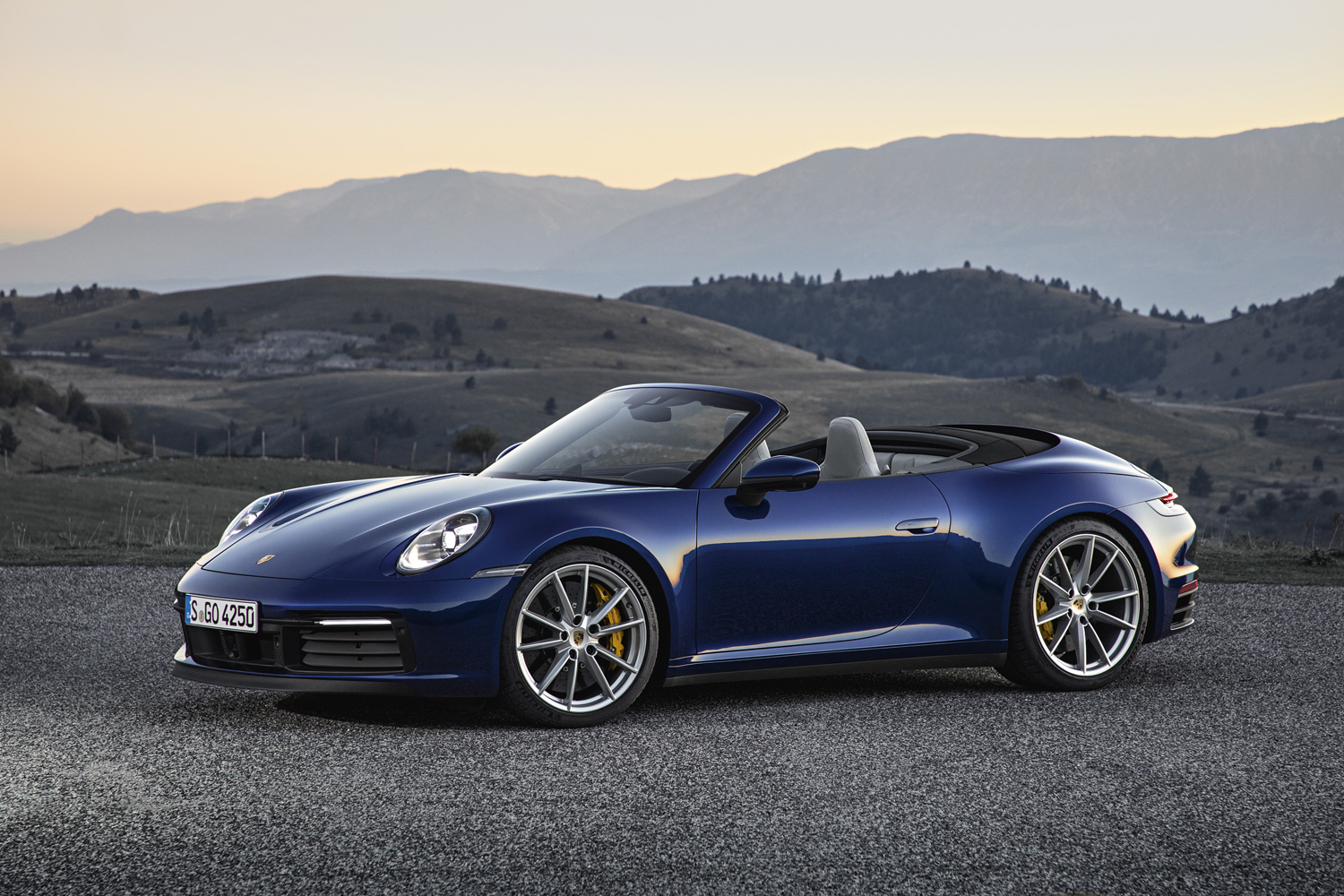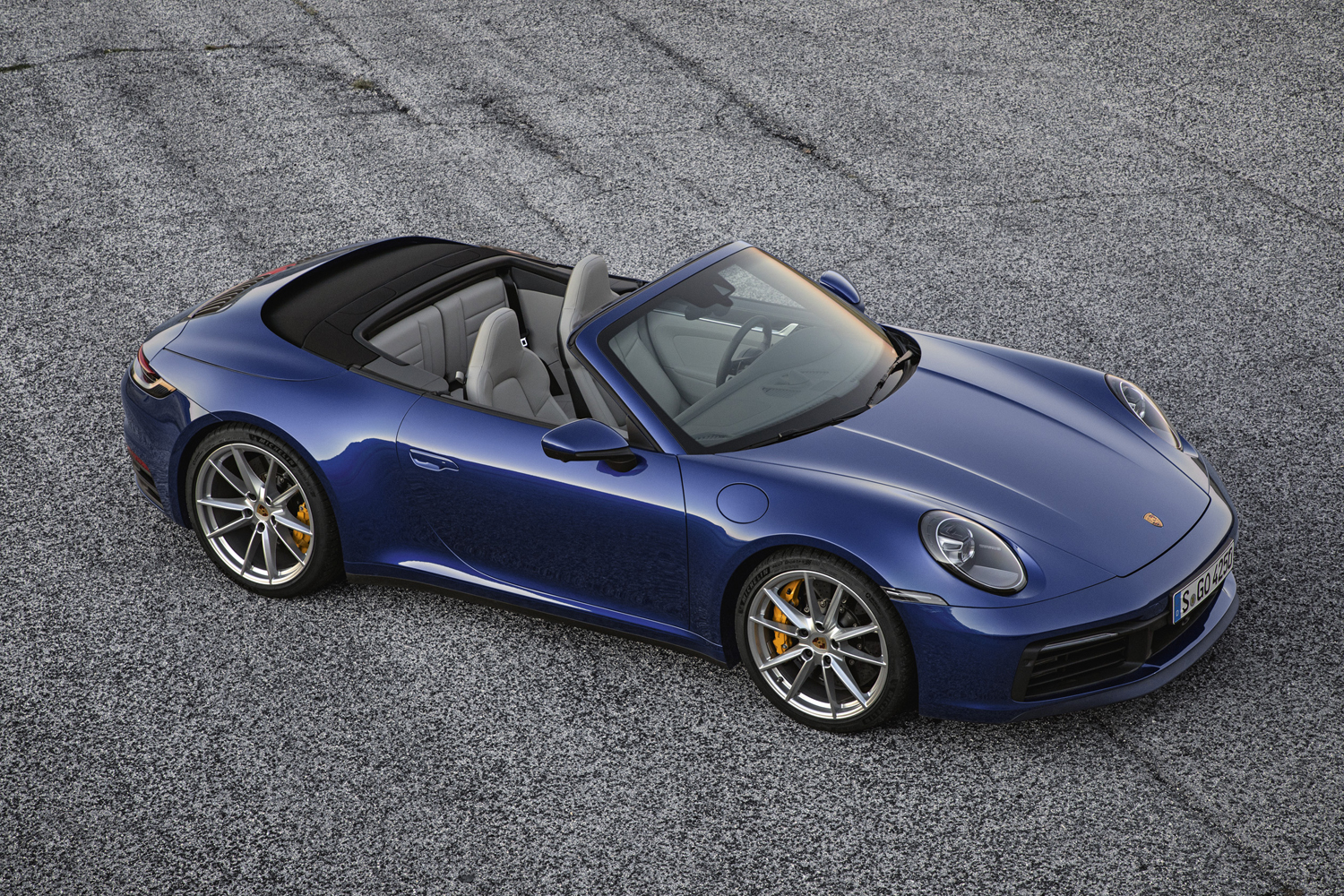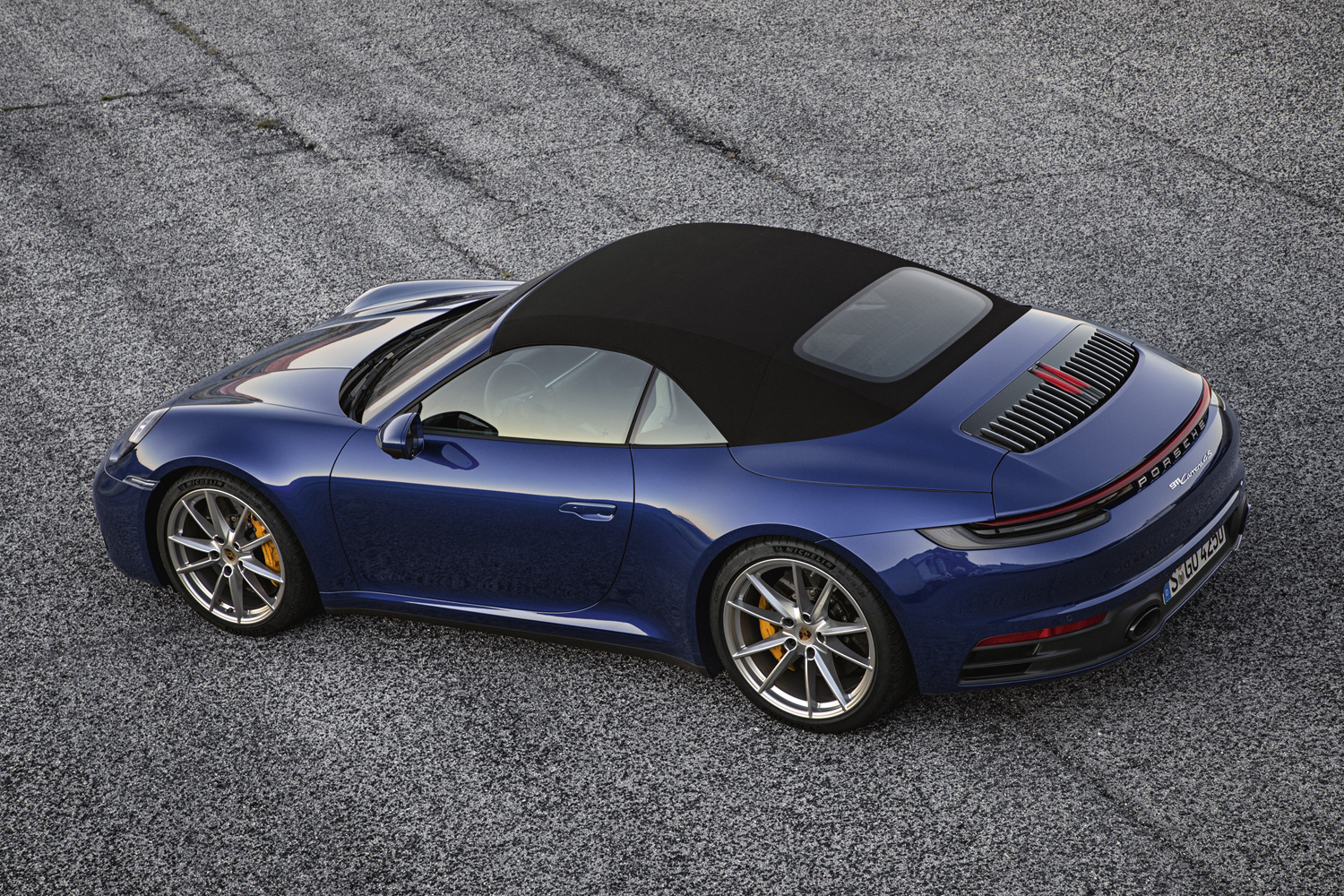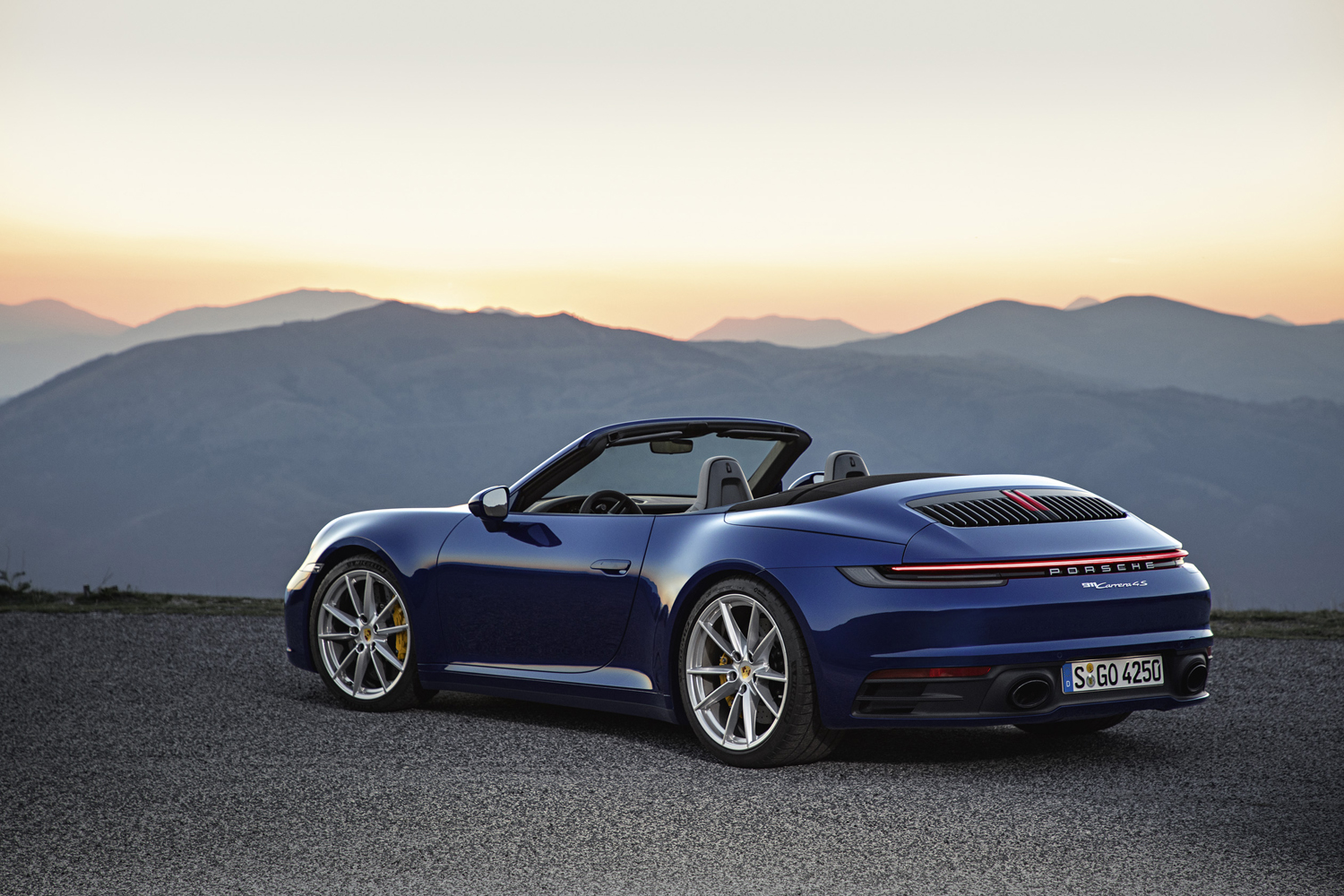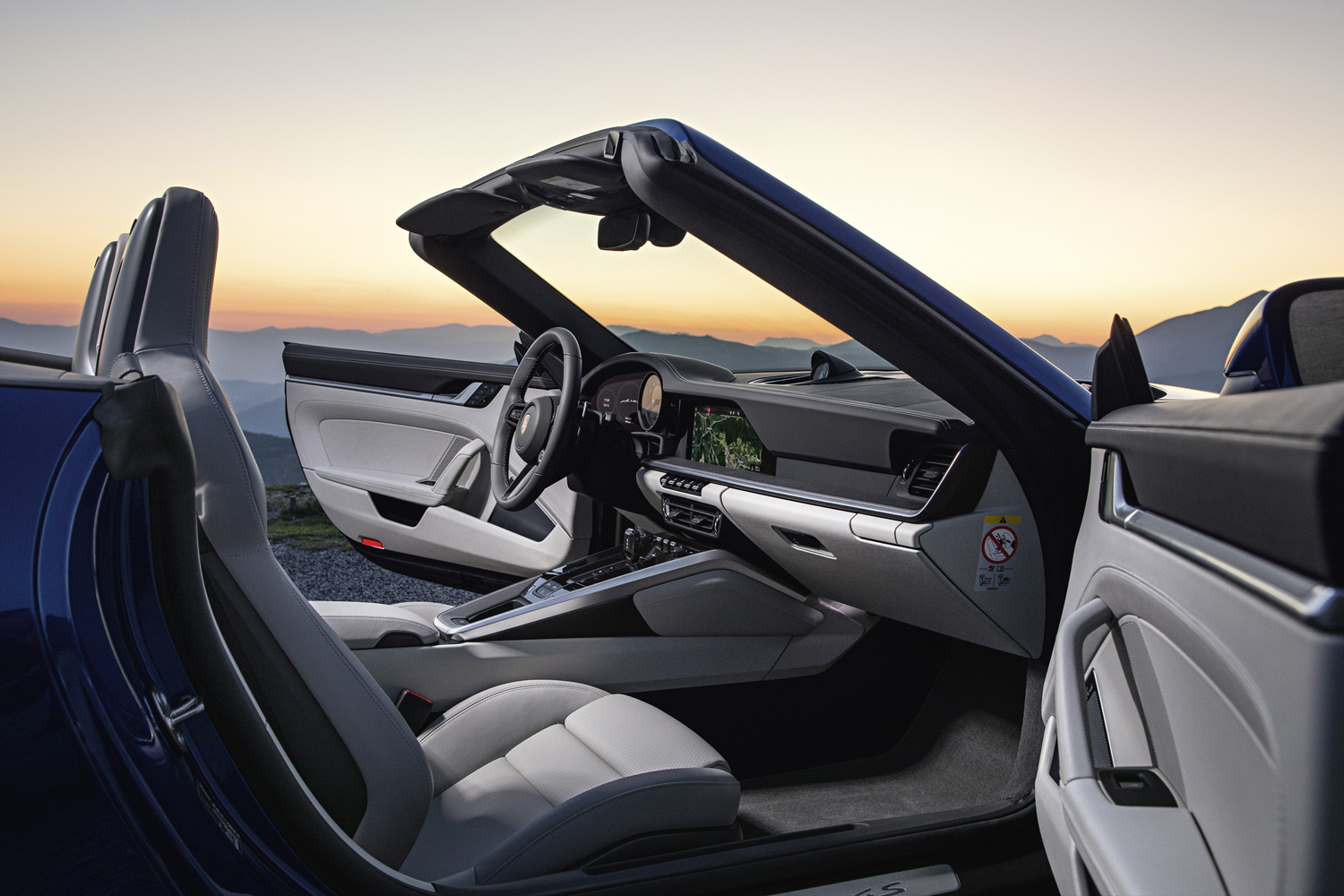Winter isn’t over yet, and it’s chilly outside, but Porsche is already looking ahead to convertible season. The German firm unveiled the 2020 911 Carrera S Cabriolet and the 2020 911 Carrera 4S Cabriolet online to help enthusiasts beat the winter blues.
The Cabriolet is nearly identical to the all-new, eighth-generation 911 introduced at the 2018 Los Angeles Auto Show from the tip of the rocker panels to the belt line. Above that, it receives a power-folding soft top with a glass window and support elements made out of magnesium in order to keep weight in check. The top opens or closes at the push of a button in about 12 seconds at speeds of up to 31 mph, ensuring owners don’t need to come to a full stop to enjoy the sun — or get out of the rain.
Inside, the 911 is more digital than ever before. It borrows features from the Cayenne and the Panamera, including an instrument cluster made up of two large, driver-configurable screens positioned on either side of an analog tachometer. Porsche includes a standard, 10.9-inch touchscreen for the infotainment system and online navigation with real-time traffic information. And, interestingly, smartphone connectivity has become a surprisingly important part of the 911 experience. The firm notably developed an app called Porsche Road Trip that helps driving enthusiasts plan road trips by selecting a scenic route, giving restaurant and hotel recommendations, and highlighting viewpoints along the way.
Mechanically, the convertible Carrera S models are identical to the coupe variants introduced at the 2018 Los Angeles Auto Show. They come with a twin-turbocharged, 3.0-liter flat-six engine that delivers 443 horsepower, a 23-horse increase over the outgoing models. An eight-speed, dual-clutch automatic transmission and rear-wheel drive come standard on the Carrera S, while the Carrera 4S receives all-wheel drive. Porsche will offer a seven-speed manual transmission at a later date.
In their quickest configuration, the Carrera S and Carrera 4S take 3.5 and 3.4 seconds, respectively, to reach 60 mph from a stop. Enthusiasts who plan on visiting a race track will be able to flirt with the Carrera’s top speed of 190 mph.
Porsche no longer offers the narrow-body 911, so every Carrera S Cabriolet regardless of drivertain configuration comes with a wide rear end. For more agility and better handling, the company offers an optional sport suspension that adds stiffer springs and sway bars while lowering the ride height. This marks the first time Porsche offers a sport suspension on the Carrera S Cabriolet.
Porsche priced the 2020 911 Carrera S Cabriolet and the 2020 911 Carrera 4S Cabriolet at $126,100 and $133,400, respectively. Neither figure includes a mandatory $1,250 destination charge. Both models are on sale now, but deliveries won’t begin until late summer 2019.
Editors' Recommendations
- Porsche’s second electric model is a sports car in hiking boots
- The Porsche Taycan falls completely short of the Model S when it comes to range
- Porsche will use discarded F1 tech for a new hybrid supercar, report claims
- Porsche’s updated 911 gets the one thing it was missing: A manual transmission
- Tesla sends a Model S to the ‘Ring to try beating Porsche (Update!)

